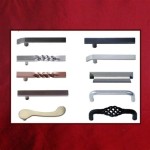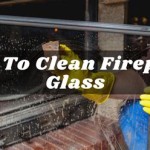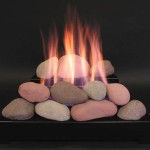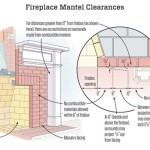Vented Fireplace Gas Inserts: A Comprehensive Guide
Vented fireplace gas inserts represent a popular choice for homeowners seeking to modernize their existing fireplaces while enjoying the convenience and efficiency of gas heating. These inserts are designed to be installed directly into an existing masonry or factory-built fireplace, transforming an often inefficient wood-burning system into a more controlled and convenient source of heat and ambiance. Understanding the functionality, advantages, and installation considerations of vented gas fireplace inserts is crucial for making an informed decision regarding home heating and renovation projects.
Unlike vent-free gas inserts, vented models require a connection to a flue or chimney for the safe removal of combustion byproducts. This venting requirement differentiates them significantly in terms of installation and operation, impacting efficiency, safety, and overall suitability for specific homes. Exploring the nuances of vented gas inserts provides a solid foundation for assessing their viability as a heating solution.
Understanding the Operation of Vented Gas Fireplace Inserts
The operational principle of a vented gas fireplace insert revolves around the combustion of natural gas or propane within a sealed firebox. This combustion process generates heat and realistic-looking flames, mimicking the appearance of a traditional wood-burning fire. The key distinction lies in the venting system. Vented inserts are designed to exhaust the products of combustion, including carbon monoxide, water vapor, and other gases, directly through the existing chimney or a dedicated venting system.
A pilot light typically provides a constant source of ignition. Some models incorporate electronic ignition systems, which eliminate the need for a standing pilot and can improve energy efficiency. Thermostats or remote controls are commonly integrated, allowing homeowners to precisely regulate the heat output and flame height, offering enhanced control over the user experience.
The aesthetics of vented gas inserts are also a key consideration. Many models are designed to replicate the look of a traditional wood-burning fireplace, featuring realistic log sets, ember beds, and adjustable flame patterns. Glass doors often enclose the firebox, providing both safety and contributing to the visual appeal of the insert. The combination of realistic aesthetics and convenient operation makes vented gas inserts a desirable option for many.
Advantages of Choosing a Vented Gas Fireplace Insert
Vented gas fireplace inserts offer several advantages over traditional wood-burning fireplaces and vent-free gas alternatives. These benefits encompass improved convenience, enhanced safety, and controlled heating, contributing to their growing popularity among homeowners.
One significant advantage is convenience. Unlike wood-burning fireplaces, there is no need to purchase, store, or transport firewood. The insert ignites with the flip of a switch or the press of a button, providing instant heat and ambiance. This eliminates the hassle of building and tending a fire, as well as the chore of cleaning up ashes and debris.
Safety is another critical benefit. Vented gas fireplace inserts are designed with safety features that minimize the risk of carbon monoxide poisoning and other hazards associated with incomplete combustion. The venting system ensures that all combustion byproducts are safely expelled from the home. Many models incorporate safety mechanisms such as oxygen depletion sensors (ODS) and automatic shut-off valves, providing an additional layer of protection.
Controlled heating is another appealing factor. Vented gas fireplace inserts allow homeowners to precisely regulate the heat output, maintaining a consistent and comfortable room temperature. Thermostatic controls enable precise temperature settings, preventing overheating and minimizing energy waste. This level of control is not typically achievable with traditional wood-burning fireplaces, which can be difficult to regulate.
Finally, aesthetics play a crucial role in the appeal of vented gas fireplace inserts. These inserts offer a wide range of design options, from traditional to contemporary styles, allowing homeowners to customize the look of their fireplace to complement their home décor. Realistic log sets and adjustable flame patterns contribute to the authentic look and feel of a wood-burning fire.
Installation Considerations for Vented Gas Fireplace Inserts
Proper installation is paramount for ensuring the safe and efficient operation of a vented gas fireplace insert. Installation typically involves connecting the insert to a gas line, installing a venting system, and securing the insert within the existing fireplace opening. It is highly recommended to hire a qualified and licensed professional for the installation process.
The existing chimney or flue must be inspected to ensure it is in good working condition and capable of handling the exhaust gases from the gas insert. If the chimney is damaged or inadequate, repairs or modifications may be necessary. In some cases, a new venting system may be required, particularly if the existing chimney is not suitable for gas appliance venting.
Gas line connections must be performed by a qualified professional to ensure they meet local codes and regulations. Leaks can be dangerous, and proper connections are essential for safety. It's also important to verify that the gas supply is adequate to support the insert's BTU rating.
Permitting requirements vary depending on local building codes. It is essential to obtain the necessary permits before beginning the installation process. A professional installer can assist with obtaining the required permits and ensuring that the installation meets all applicable regulations.
Finally, proper ventilation is crucial for ensuring the safe and efficient operation of a vented gas fireplace insert. The venting system must be properly sized and installed to effectively exhaust combustion byproducts from the home. Regular inspections of the venting system are recommended to ensure it is functioning properly.
Selecting the appropriate size of the gas insert for the space being heated is also vital. Over-sizing can lead to inefficient operation and discomfort, while under-sizing can result in inadequate heating. Consulting with a professional is crucial for determining the optimal BTU output for the room.
Cost considerations are particularly important. The initial cost of purchasing the gas insert is just one factor. Installation costs, gas line modifications (if required), and potential chimney repairs or upgrades contribute significantly to the overall expense. Long-term operational costs, including gas consumption and maintenance, also need to be factored into the decision-making process.
Regular maintenance is essential for ensuring the long-term performance and safety of a vented gas fireplace insert. This includes cleaning the glass door, inspecting the log set, and checking the pilot light and venting system. Annual inspections by a qualified technician are recommended to identify any potential problems and ensure that the insert is operating safely and efficiently.
Beyond the functionality and practicalities of vented gas fireplace inserts, the aesthetic and design considerations hold substantial weight for many homeowners. The visual appeal of the insert significantly impacts the overall ambiance of the room. Therefore, carefully assessing the available design options and selecting an insert that complements the existing décor is essential. The availability of different log sets, flame patterns, and surround finishes enables homeowners to tailor the appearance of the fireplace to their specific aesthetic preferences. Investing time in exploring the design options ensures that the vented gas fireplace insert seamlessly integrates into the home's overall design scheme, enhancing the visual appeal and creating a welcoming and comfortable atmosphere.

Top Direct Vent Gas Inserts In D C

Empire Direct Vent Gas Fireplace Insert Loft

Top Direct Vent Gas Inserts In D C

Fireplace Insert Guide Fireplaces Direct Learning Center

35 Ruby Contemporary Intellifire Touch Direct Vent Fireplace Insert Blower And Remote Electronic Ignition Majestic

Enviro E Series Gas Or Propane Insert Fireplace Fireplaces By Cameron

Rushmore 30 Direct Vent Fireplace Insert Fine S Gas

Monessen Direct Vent Gas Fireplace Insert Reveal

12 Types Of Gas Fireplaces You Need To Know

Freestanding High Efficiency Direct Vent Gas Fireplaces Inserts Stoves Godby Hearth And Home








